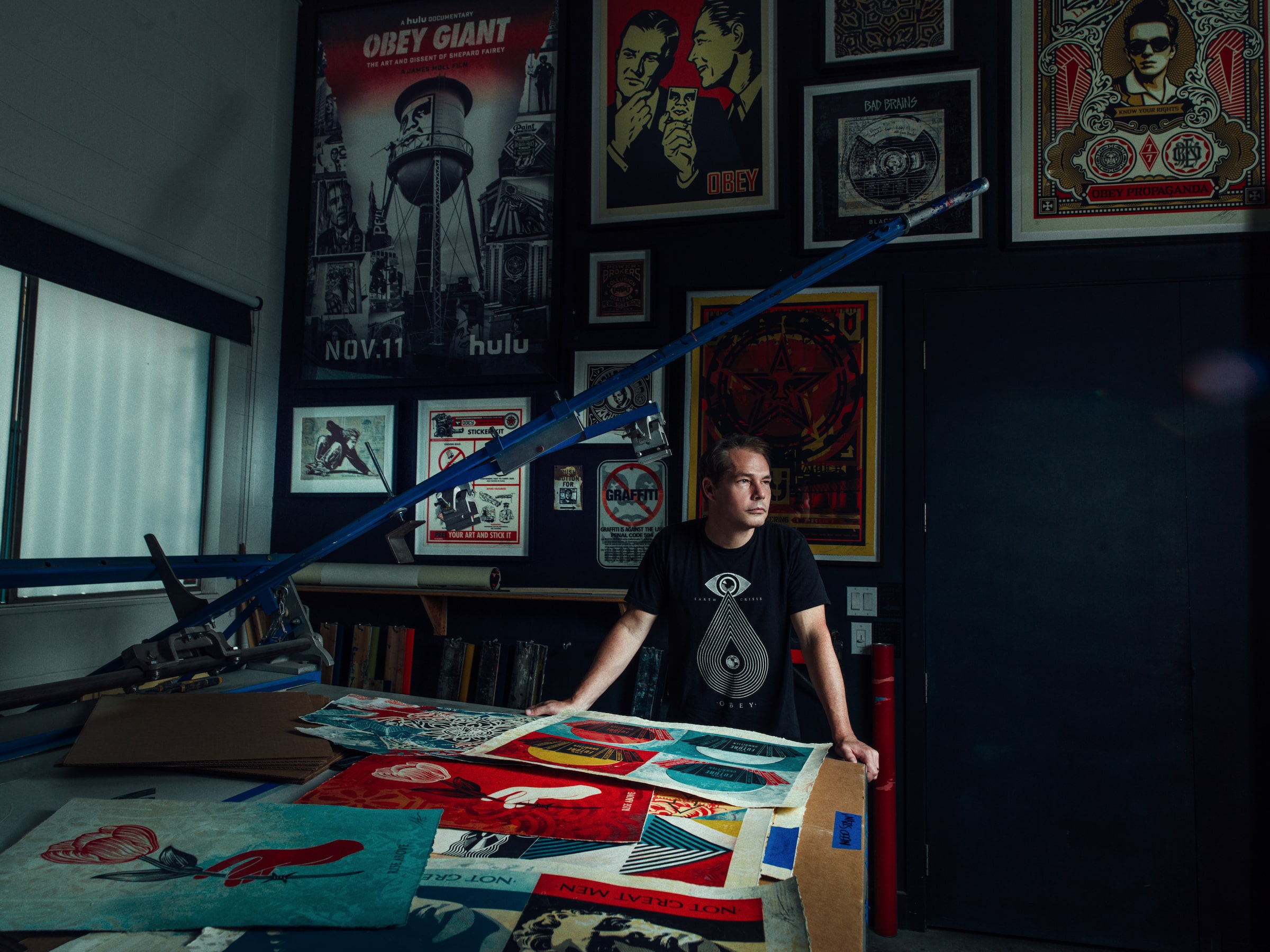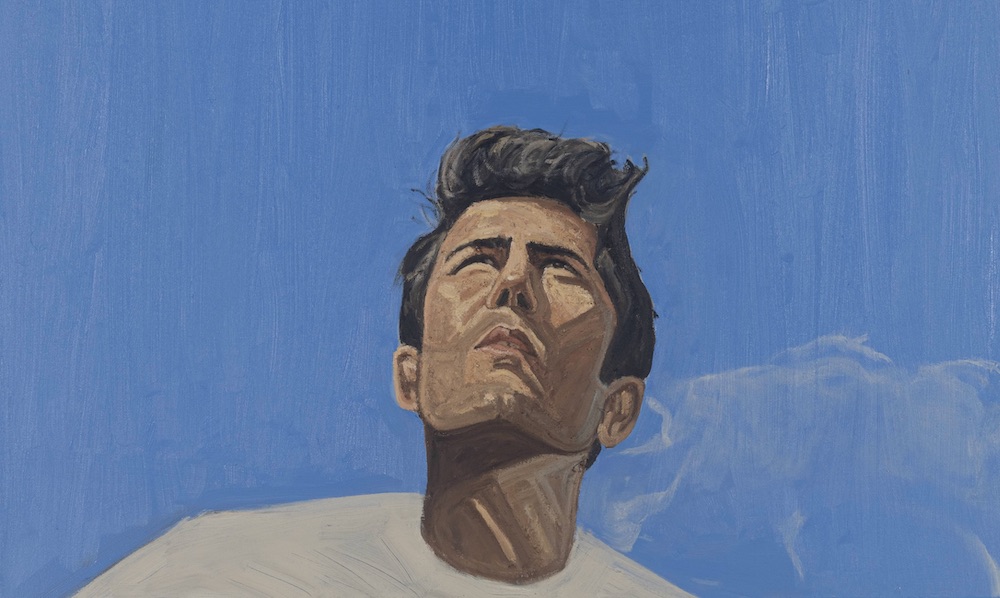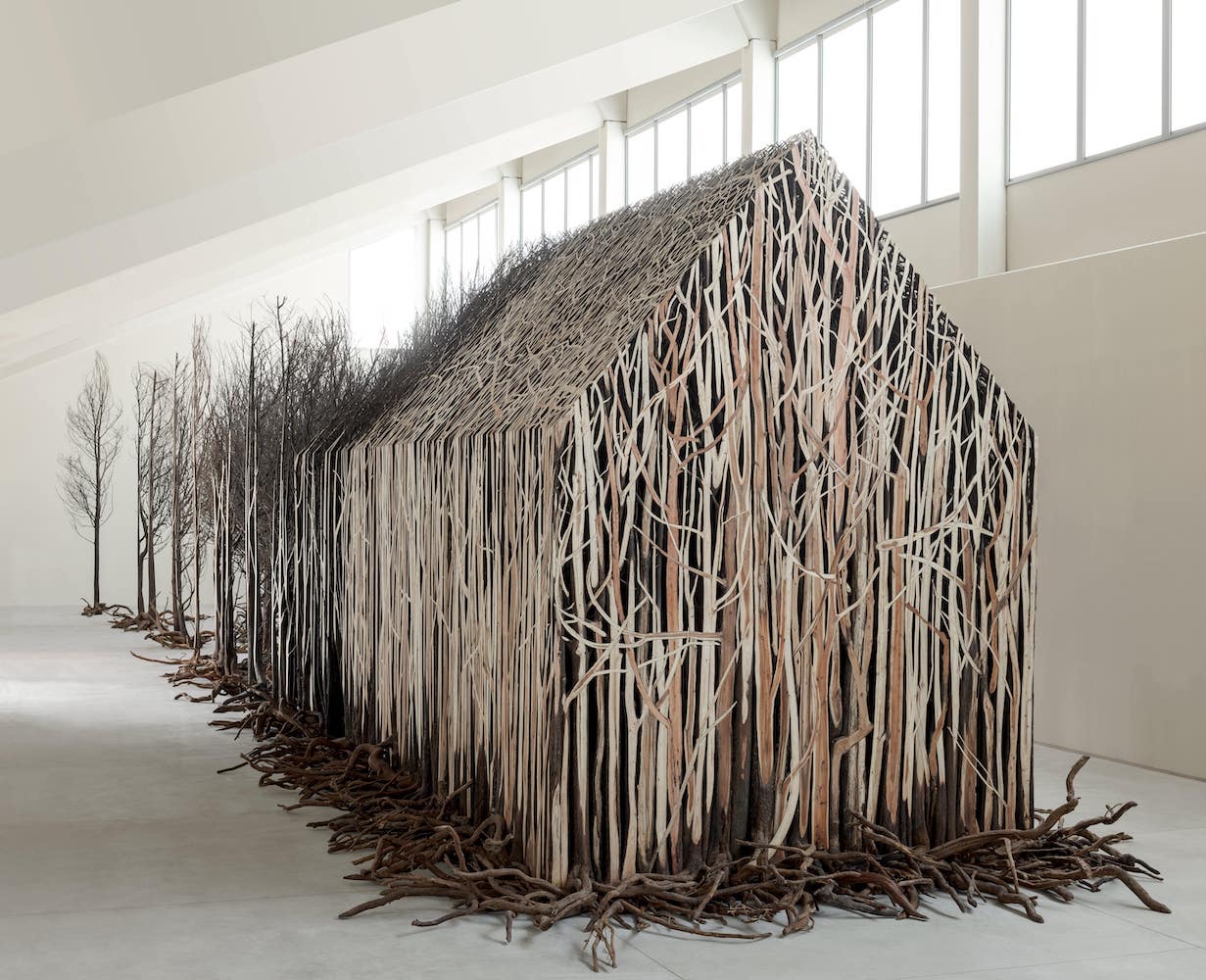Organic is an aesthetic understatement for the Brazilian furniture designer Gustavo Neves. Growing up in the municipality of Jaú in São Paolo, Neves takes cues from his childhood surrounded by nature, and from the time he spent with his family.
Neves embraces designs with natural materials, inspired by his grandfather—a craftsman who carved and created string instruments. His lamps and tables are typically created with raw materials like non-polished stones and varying woods.
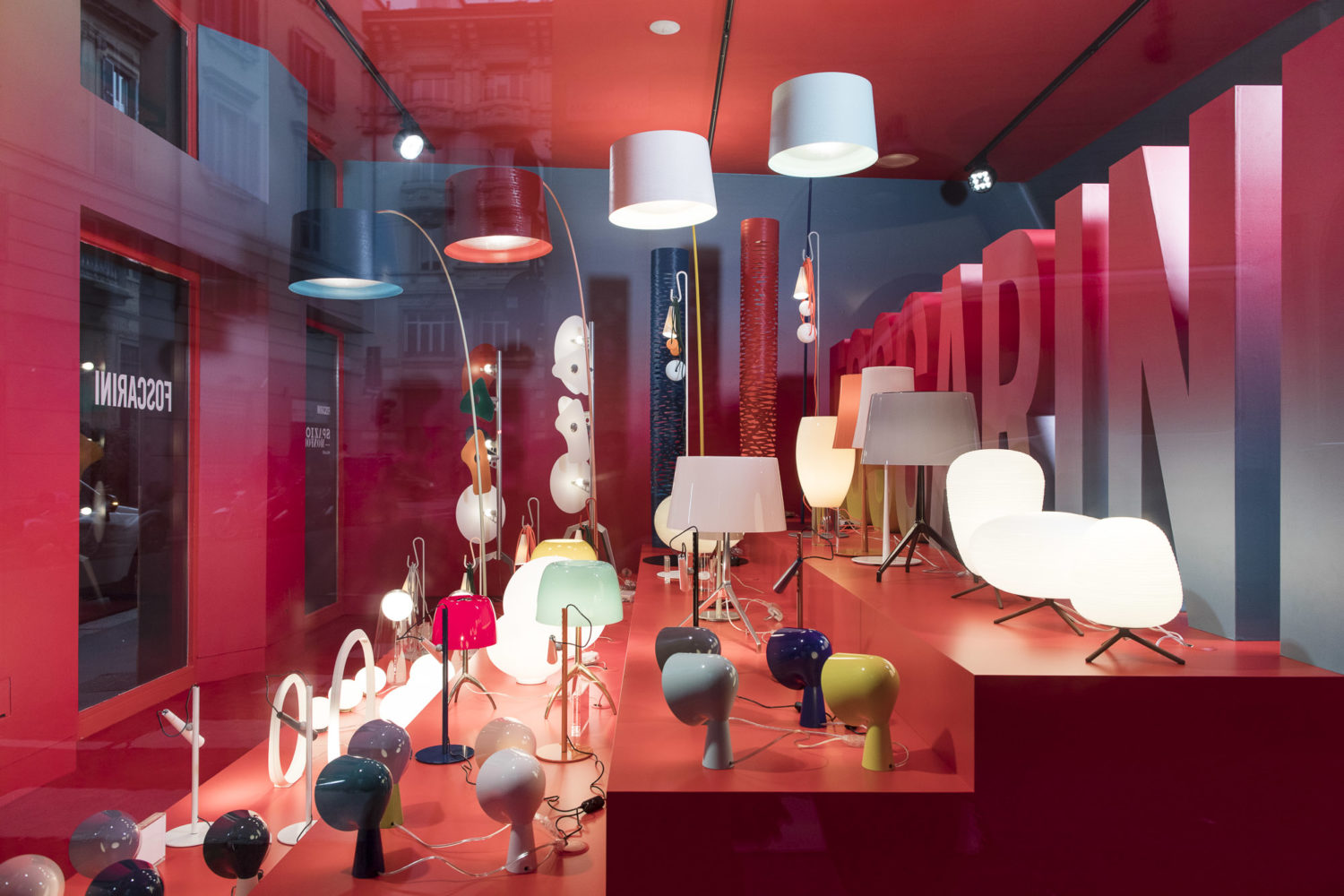
Courtesy of Poliform.
Today, Neves is revealing a new line of pieces in collaboration with The Invisible Collection. Lighting, tables, seating, and design objects are seen in his original cast wood technique, accented by artisan technique.
Whitewall spoke with Neves to hear more about his latest collection, how he’s communicating positive energy with his pieces, and why he’s paying homage to nature with design.
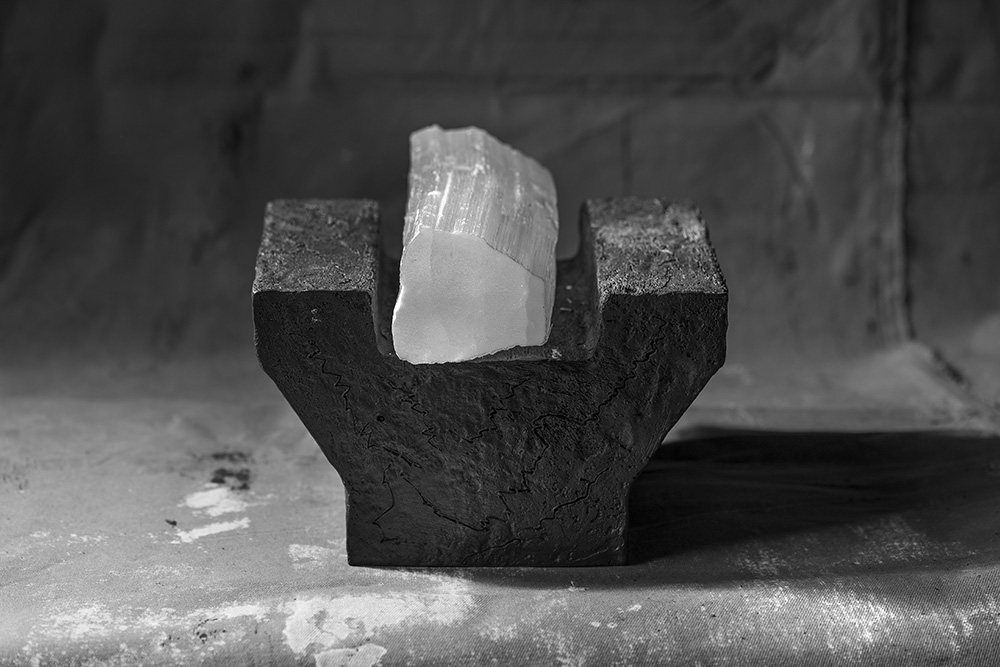
The Invisible Collection x Gustavo Neves; courtesy of Gustavo Neves.
WHITEWALL: You were born and raised in São Paolo, and your work takes inspiration from your childhood and your natural surroundings in Jaú. Tell us about this.
GUSTAVO NEVES: I feel that as adult human beings, we tend to seek memories from the past to help us in the present, and I can say that it happens in my creation process. Our present choices are related to our biographical and emotional repertoire.
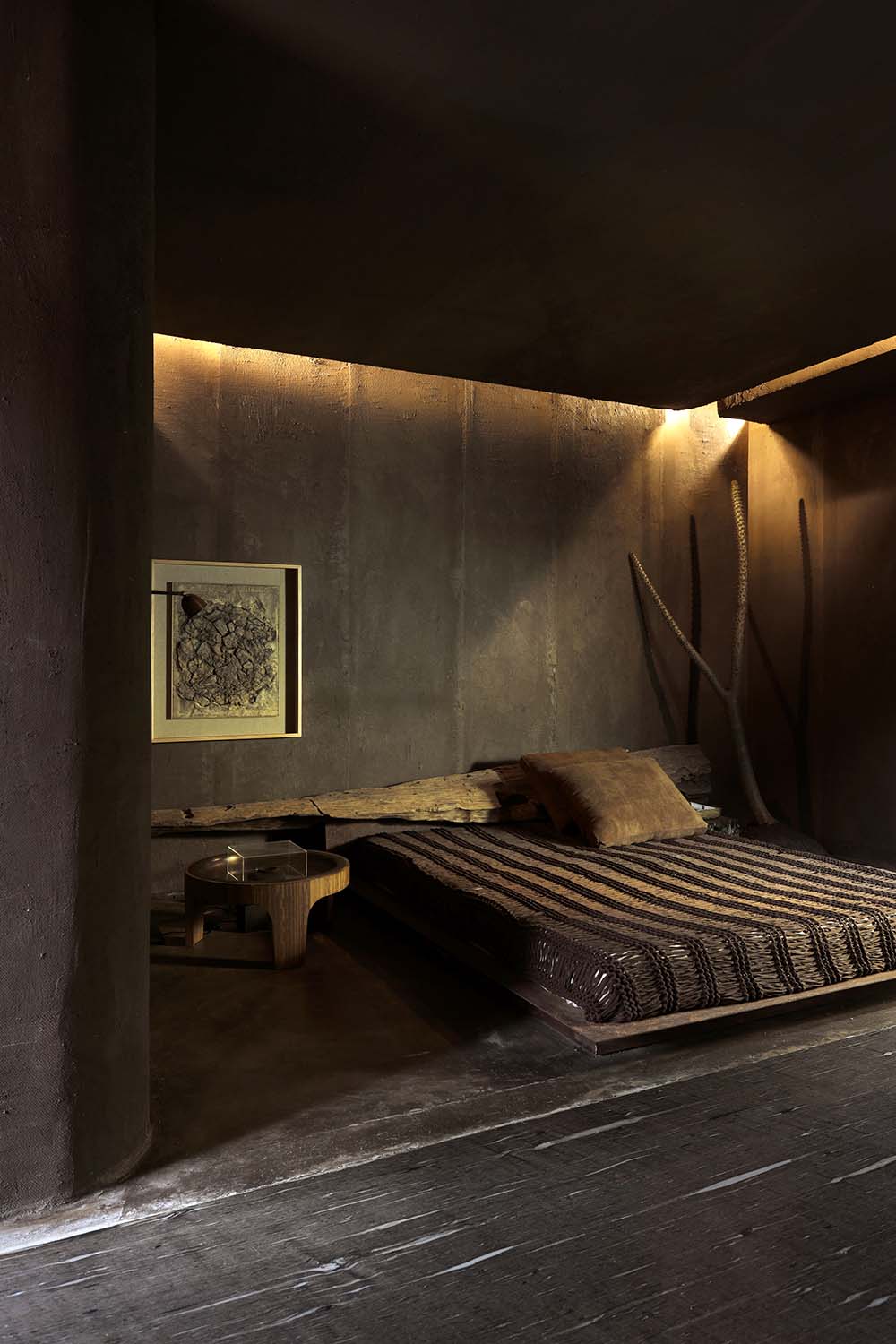
The Invisible Collection x Gustavo Neves; courtesy of Gustavo Neves.
When something enchants us, for example, it is because we are unconsciously carried away by something present in it. Good feelings from the past come to the surface.
When I create, I look for happy references from a place where I felt loved—not necessarily Jau, but having lived all my childhood there, it is obviously at the top of the list. These memories lead me to self-reflection and how I can transmit to people who identify with that work all the good energies present in that experience. I think this way I am creating a positive energy connection with those who will live with my works. If the person can feel the energy there, he/she will naturally transmit it to the people with whom he or she lives.
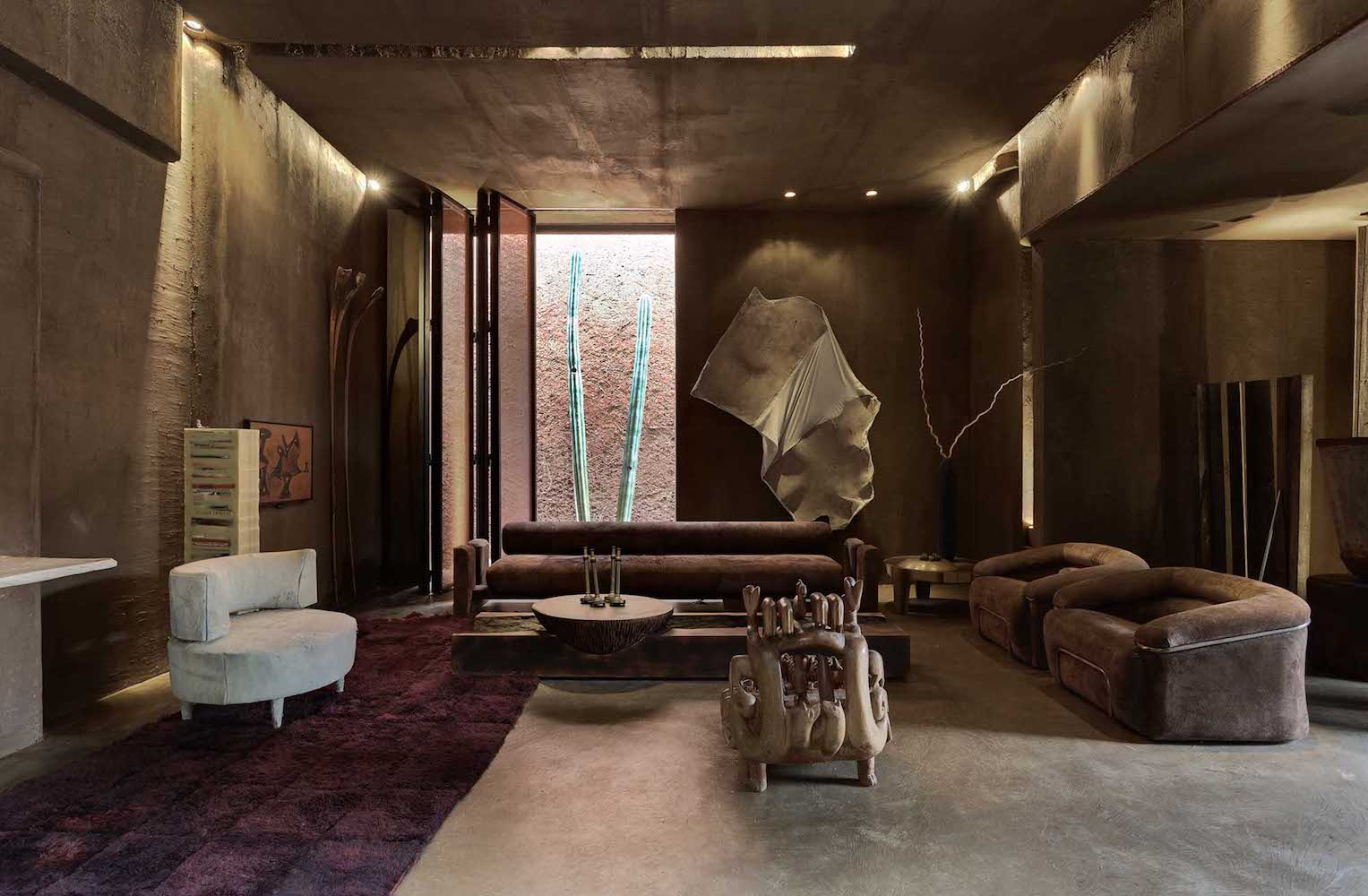
The Invisible Collection x Gustavo Neves; courtesy of Gustavo Neves.
WW: How did your grandfather’s work as a craftsman inspire you?
GN: Yes, my grandfather was an artisan and used to make brooms, toys, and musical instruments. I used to spend my afternoons after school with him in his atelier. Everything there delighted or amused me—the hand-woven straw brooms; the way he molded, fit, and sanded the wood before varnishing the guitars; and the way he sculpted the solid wood toys that were made with discarded wood or leftovers from boxes.
Today, my work is often guided by discarded materials or something I find in the streets. For example, the SUME light, which is a limited edition, is made using Carnauba (palm tree) stems that I collect in the square in front of my house after heavy rain in São Paolo.
WW: What type of atmosphere did you want to create with your concept house Casa Sumē?
GN: Casa Sumē was a tribute to Brazilian popular culture so neglected in our country.
I wanted to show that Brazilian popular art does not need to be associated with the almost philanthropic work that associations of artists and artisans in Brazil do with great competence but is still seen by many as falling short of a conceptual or sophisticated project.
Regarding the question of my work in general, my studio stopped being an architecture and design office for a while to become an experience design studio and since then we have created projects for our clients where all the senses are sharpened.
What we intend to create is the particular universe of each client or project, so, in addition to the architecture where we design and produce textures or handmade peels on the walls, taps, door handles, and works of art, passing, of course, through furniture and lighting. We also created room fragrances, tableware, and even the soundtrack that will be played in the space (for commercial projects).
All of this is based on the personality and lifestyle of each client. I believe that in this way we are contributing so that architecture becomes part of the future memories of each member who will live or attend that space. This way we are helping to create good and important memories.
WW: How do you work with unpolished stones, wood, and other raw materials?
GN: There is no sequence or pattern for creation in the studio. Sometimes it comes from paper, where I draw things that move me, sometimes it materializes three-dimensionally, as the process starts with me sculpting something out of clay. After this sculpture, a mold is made for the casting in bronze. Only at the end of the process, my team starts taking measurements and making the technical drawing of the piece.
I keep various raw materials in the studio, in order to observe it and slowly start to understand it. From time to time I take one of these materials and apply them in a new way. For example, I take a rough emerald stone and place it on a coffee table, visualizing a bronze bracelet to fit it on the table.
WW: What role does nature play in your practice, in relation to sustainable design?
GN: I feel that our relationship with nature must be an exchange. I don’t want to simply explore nature, I try to ask for permission to give a new use to its materials. I am grateful for that and I give continuity to the process. In return, I pay homage to the origin of the material, featuring it in a work or piece that will be part of the history of those who will buy it.
In projects, I always try to use everything the client already has and, in the case of renovations, I try to make the most of the materials that are already in the property, transforming or renovating them, so as not to generate unnecessary rubbish and discharges as well as not consuming a new product to replace what was discarded.
WW: Can you tell us about the Invisible Collection?
GN: The Invisible Collection’s philosophy is to work with products that the customer would otherwise not have access to since they were being designed for specific projects. This thought makes me feel honored to be part of the group of designers of the gallery’s select curatorship.
The choice of pieces was at their discretion and we were happy to see that pieces were selected from all of our collections, with a mix between larger pieces such as dining tables, sofas, coffee tables, and smaller pieces like vases and objects.
Each of our collections has unique and specific processes, but what I can guarantee is that regardless of the collection, each piece was designed to improve the daily life of those who connect with it and decide to take it home.





